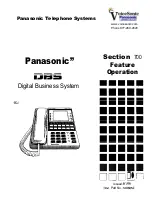
Page 4 of 5
inSTallaTion oF dual Fuel ConTaineR holdeRS
mainTenanCe
•
Check accessory is securely attached whenever you refit it to the vehicle. If the unit feels
loose, refer to the fitting instructions and readjust.
•
Regularly check all fasteners. This includes all attached accessories and roof racks.
•
If straps become contaminated with oil, fuel or acid remove with hot soapy water.
•
If the ratchet mechanism becomes stiff in use, a small amount of lubrication applied to the
moving parts will ease operation.
CauTion
•
Ensure that all loads are distributed evenly across the roof racks and are fastened securely.
•
A loaded roof rack system can alter the performance of your vehicle. Be especially aware
of the effects of side winds, changing of direction, and braking performance. Avoid rapid
acceleration and deceleration. Drive Carefully.
•
Make sure all loads are securely fastened with non-elastic straps. Check regularly during
longer journeys.
•
Never drive into a car wash with the roof rack system fitted.
•
Do not exceed the vehicle manufacturer’s roof load rating. Total load equals weight of roof
racks + acces cargo/equipment.
•
Ratcheting strap must not be used for lifting. Protect from abrasion and friction. Do not tie
knots in the straps. Do not use a damaged strap.
•
150kg lashing capacity on the polypropylene webbing.
For this configuration, one mounting bracket will be required to sit on
the other as shown. Adjust position of the mounting brackets to ensure
both holders sit flat on the cargo tray.
Using an M10 x 25mm set screw, an M10 spring washer and an M10
washer, assemble the two holders on to the spring nut or T-nut in the
crossbar channel. Use a 16mm socket & socket wrench to tighten
the set screw to 4-5Nm.
One mounting bracket
sitting on the other























